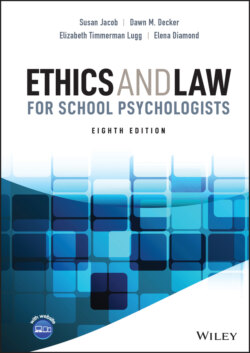Читать книгу Ethics and Law for School Psychologists - Susan Jacob - Страница 70
The 14th Amendment
ОглавлениеAs noted, the Bill of Rights was passed to ensure a clearer balance of power between the federal government and the states and to safeguard the rights of individual citizens. The 14th Amendment was created to prevent state governments from trespassing on the rights of individual citizens: “No state shall make or enforce any law which shall abridge the privileges or immunities of citizens of the United States … without due process of law.”
The Bill of Rights have been incorporated by the 14th Amendment to apply to states as well as the federal government, including public schools.
Because education is a duty left to the states, the courts have long held the position that “judicial interposition in the operation of the public school system requires care and restraint” (Epperson v. State of Arkansas, 1968). As the Supreme Court stated in Epperson,1 “By and large, public education in our Nation is committed to the control of state and local authorities. Courts do not and cannot intervene in the resolution of conflicts which arise in the daily operation of school systems and which do not directly and sharply implicate basic constitutional values” (p. 104).
The 1950s, 1960s, and 1970s were decades of increasing federal court involvement in school-related issues, however, because of school actions that violated the constitutional rights of students and their parents. Two aspects of the 14th Amendment have been extremely important in decisions regarding schools: the equal protection clause and the requirement for procedural due process .
